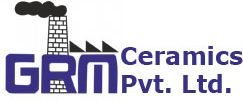In the evolving world of ceramics manufacturing, businesses looking to scale efficiently and strategically are increasingly turning their gaze toward Southeast Asia. But why is this region emerging as a critical hub for ceramic frit sourcing in particular? The answer lies in a unique blend of market dynamics, geographical advantages, and synchronized regional growth patterns that make Southeast Asia not just an alternative—but a strategic move for the future.
Explosive Market Growth: Ceramic Frit in High Demand
The global ceramic frit market, valued at USD 1.73 billion in 2024, is on track to reach USD 2.53 billion by 2033, growing at a CAGR of 4.3%. This demand surge is significantly influenced by the global construction boom, which accounts for about 55% of market demand and is set to contribute 30% of the overall growth, particularly in emerging economies. These figures highlight a clear trajectory: the world needs more ceramic frit, and manufacturers need reliable, scalable, and cost-effective sources.
Enter Southeast Asia—a region rapidly becoming a frontrunner in the global ceramic supply chain.
ASEAN: A Booming Ceramics Powerhouse
Within the ASEAN bloc (Association of Southeast Asian Nations), the ceramic market was already valued at USD 7.68 billion in 2023, and it is projected to grow at an impressive CAGR of 6.1% between 2024 and 2030. Countries like Indonesia, which holds 28.4% of the ASEAN ceramic market share, are leading the charge with a projected growth rate of 6.7% CAGR.
This robust market performance is fueled by two main trends:
- Urbanization: Rapidly increasing urban populations demand more housing, infrastructure, and public facilities—all of which drive ceramic product consumption.
- Infrastructure Development: Governments across the ASEAN region are investing heavily in roads, smart cities, transport, and housing, creating massive demand for ceramic tiles and frit-based products.
Parallel Growth in Bangladesh and Nepal: A Strategic Opportunity
Interestingly, the very same trends—urbanization and infrastructure development—are also shaping the ceramic market in Bangladesh and Nepal. Both countries are witnessing an infrastructure boom and rising demand for ceramic products. This similarity in growth drivers creates a mutually beneficial ecosystem between Southeast Asia and these South Asian nations.
By sourcing from Southeast Asia, ceramic manufacturers and traders in Bangladesh and Nepal can tap into a market that already understands and serves the kind of demand they are facing. This isn’t just about today’s need—this is about building long-term partnerships with suppliers who are aligned with the same trajectory of growth and demand.
Competitive Advantages Beyond Market Numbers
Beyond the compelling market data, Southeast Asia also offers practical sourcing advantages:
- Competitive Labor Costs: Manufacturing in countries like Vietnam, Indonesia, and Thailand is more cost-effective than many Western counterparts.
- Strategic Location: The region is geographically well-placed with access to major shipping routes and trade corridors, ensuring faster and cheaper logistics.
- Mature Supply Chains: The region has decades of manufacturing experience, leading to improved quality control, technological capability, and production efficiency.
Final Thoughts: It’s More Than Just Sourcing—It’s Strategy
Choosing Southeast Asia as a sourcing hub for ceramic frit isn’t just a reaction to cost concerns or immediate demand. It’s a forward-thinking strategy that aligns your supply chain with a region poised for long-term growth, regional synergy, and infrastructural momentum.
As the ceramic markets in both Southeast and South Asia continue to expand on similar foundational drivers, the synergy between them will only strengthen. If you’re in the ceramic manufacturing business, especially in emerging markets like Bangladesh or Nepal, Southeast Asia is not just a smart option—it’s the strategic direction your business needs.


